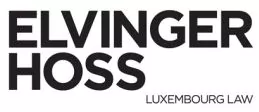1. Trade Mark and Copyright Law
1.1 Governing Law
There are no laws governing trade marks in Luxembourg, as there are no Luxembourg trade marks. Luxembourg is part of the amended Benelux Convention on Intellectual Property (Trademarks and Designs) of 25 February 2005 ("Benelux Convention"), which establishes a regional trade mark for Luxembourg, Belgium and the Netherlands. Only registered trade marks are recognised in Luxembourg, except for trade marks that are well known within the meaning of Article 6bis of the Paris Convention for the Protection of Industrial Property ("Paris Convention") – namely non-registered trade marks that are renowned in the Benelux territory ("wellknown trade marks".
Authors' rights are governed in Luxembourg by the amended Law of 18 April 2001 on authors' rights, related rights and databases (the "Authors' Rights Law"). The law of 22 May 2009 transposed Directive 2004/48/EC on the enforcement of intellectual property rights into Luxembourg law, and concerns both trade marks and authors' rights (among other intellectual property rights). The law of 25 April 2018 transposed Directive 2014/26/EU on collective management of copyright and related rights and multi-territorial licensing of rights in musical works for online use in the internal market into Luxembourg law.
1.2 Conventions and Treaties
Luxembourg is a member of several conventions and treaties, including:
- the Berne Convention for the Protection of Literary and Artistic Works;
- the WIPO Copyright Treaty;
- the Benelux Convention;
- the Paris Convention;
- the Trademark Law Treaty;
- the Singapore Treaty on the Law of Trademarks;
- the Madrid Agreement Concerning the International Registration of Marks;
- the Nice Agreement Concerning the International Classification of Goods and Services for the Purposes of the Registration of Marks ("Nice Classification"); and
- the Vienna Agreement Establishing an International Classification of the Figurative Elements of Marks.
Luxembourg is also a member of the World Trade Organization and has therefore been a party to the Agreement on Trade-Related Aspects of Intellectual Property Rights since 1995.
1.3 Foreign Trade Mark and Copyright Owners
Only Benelux, EU or international trade marks designating Luxembourg are protected in Luxembourg. However, owners of foreign trade marks may benefit in the Benelux from a right of priority (ie, the possibility to rely on an earlier date of filing in a country when applying for a trade mark in another country) provided for by the Paris Convention.
As a matter of principle, all foreign authors enjoy the rights guaranteed by the Authors' Rights Law in Luxembourg. There are some specific provisions regarding the protection period and the artist's resale rights.
2. Trade Mark Ownership, Protection and Rights
2.1 Types of Trade Marks Benelux trade marks can be:
- trade marks designating goods or services, filed by natural or legal persons;
- collective trade marks – ie, trade marks filed by public entities or by associations that have the capacity in their own name to have rights and obligations, to make contracts or accomplish other legal acts, and to sue and be sued; or
- certification trade marks – ie, trade marks capable of distinguishing goods or services that are certified by the owner in respect of material, the mode of manufacture of goods or performance of services, quality, accuracy or other characteristics, with the exception of geographical origin, from goods and services that are not so certified.
A trade mark may consist of any signs, in particular words (including personal names) or designs, letters, numerals, colours, the shape of goods or of the packaging of goods, or sounds, provided that such signs are capable of being represented on the register in a manner that enables the competent authorities and the public to determine the clear and precise subject matter of the protection afforded to its owner.
It is not currently possible to apply for an olfactory or taste trade mark
The distinctive symbols or insignia consisting of the five interlaced Olympic rings and the Olympic motto "citius, altius, fortius" are protected by grand ducal regulation in Luxembourg, as are the emblems of the Luxembourg Olympic and Sports Committee approved by the International Olympic Committee. The unauthorised use of the coat of arms of the Grand Ducal House, those of the State and of the communes, the national flag, the waterway and aviation pavilion and the national anthem, as well as all badges, emblems and symbols used by the authorities and by public entities, is also criminally sanctioned.
Luxembourg protects famous trade marks (ie, trade marks that are registered but not for the goods and services for which protection is sought) or well-known trade marks to the extent they have a reputation in Luxembourg.
2.2 Essential Elements of Trade Mark Protection
Any sign can qualify for trade mark protection if it is capable of:
- distinguishing the goods or services of one undertaking from those of other undertakings (distinctiveness); and
- being represented on the register in a manner that enables the competent authorities and the public to determine the clear and precise subject matter of the protection afforded to the owner.
Grounds for the refusal of an application or the invalidity of a registration may include:
- signs that cannot constitute a trade mark;
- trade marks that are devoid of distinctive character;
- trade marks that are contrary to public policy or morality;
- trade marks that are liable to mislead the public (eg, as to the nature, quality or geographical origin of the product or service); and
- trade marks that are identical or similar to an earlier trade mark.
The distinctive character of a sign is a relative concept that must be assessed on a case-bycase basis, in relation to the goods and services for which the trade mark is applied for.
If a sign does not, in itself, have distinctive character, it may acquire it through use. Acquired distinctive character means that, as a consequence of its use, the sign is now perceived by the relevant section of the public as being a trade mark that distinguishes the goods or services of the applicant. As indicated on the website of the Benelux Office for Intellectual Property (BOIP), supporting documents may concern the sign's market share or the intensive, geographically widespread and long-standing nature of the use of the sign, statements from trade and professional associations or opinion polls.
Finally, the exclusive rights granted to the owner of a Benelux trade mark are subject to the registration of the trade mark (except for well-known trade marks).
2.3 Trade Mark Rights
A trade mark owner is granted exclusive rights, and is entitled to prevent any third party from using a sign in the course of trade without their consent when:
- the sign is identical to the earlier trade mark and the goods or services at stake are also identical; or
- the sign is identical or similar to the earlier trade mark, the goods or services at stake are identical or similar and there is a likelihood of confusion on the part of the public between the sign and the earlier trade mark.
The owner of a Benelux trade mark that has a reputation in the Benelux territory is also entitled to prohibit the use of a sign which, without due cause, takes unfair advantage of, or is detrimental to, the distinctive character or the reputation of the trade mark (regardless of whether or not the sign is used in relation to goods or services that are identical or similar to those for which the earlier trade mark is registered).
Even if the sign is not used as an indicator of the origin of goods or services, the owner of an earlier Benelux trade mark can prohibit the use of the sign in the course of trade, without due cause, that would take unfair advantage of or be detrimental to the distinctive character or the reputation of the earlier trade mark.
2.4 Use in Commerce
Under the Benelux Convention, five years after the date on which a trade mark is registered, the trade mark owner can be requested to demonstrate that the trade mark has been put to genuine use in the Benelux territory for the goods or services for which it is registered. Use of the trade mark by a licensee is of course considered as use of a trade mark. Use of a trade mark in a form that differs in elements that do not alter its distinctive character from the form in which it was registered is also considered as genuine use of the trade mark.
Supporting documentation includes invoices, screen prints of website or advertising brochures showing the trade mark.
Most of the time it is necessary to establish that the defendant has used the sign as a trade mark (but see also 2.3 Trade Mark Rights). A trade mark owner may also prohibit the use of a subsequent sign as a trade or company name if such use infringes its exclusive rights (see 2.3 Trade Mark Rights).
2.5 Notices and Symbols
Under the Benelux Convention, there is no requirement to use a symbol denoting that a trade mark is registered. The use of a symbol like ® does not provide any protection and has no legal value in Luxembourg.
2.6 Related Rights
A trade mark can also be protected by copyright or related rights – eg, in the case of logos. The corresponding legislation will apply independently.
A trade mark owner cannot prohibit the use by an individual of his/her name in the course of trade if such use is made in accordance with honest practices in industrial or commercial matters.
To view the full article, click here.
The content of this article is intended to provide a general guide to the subject matter. Specialist advice should be sought about your specific circumstances.


